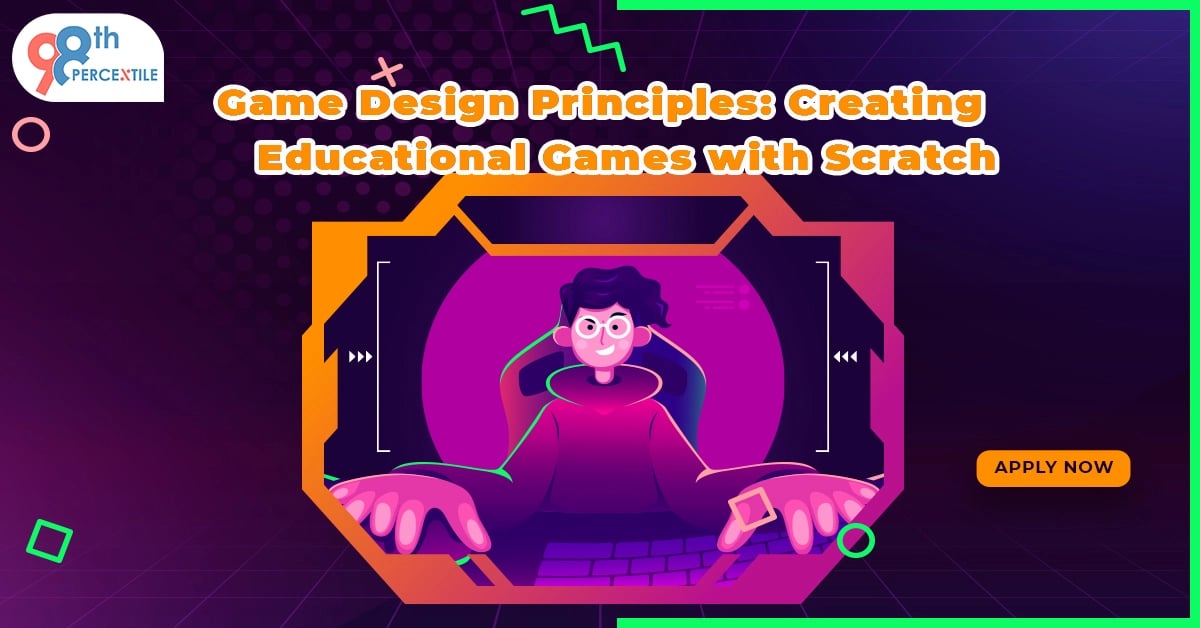Welcome, aspiring game designers! Today, we embark on an exciting journey into the realm of game design, focusing on creating educational games that turn learning into an engaging adventure. Specifically tailored for students in grades 4 to 8, this article aims to shed light on game design principles that transform education into an interactive and enjoyable experience through the use of Scratch. 
The Fusion of Learning and Play
Games have a remarkable potential to facilitate learning in a captivating and immersive way. They can transform seemingly complex concepts into fun challenges, encouraging active participation and retention of knowledge. With platforms like Scratch, the world of game design becomes accessible, empowering students to not just consume content but create their own educational experiences.
Begin Your Child's Coding Adventure Now!
What Is Scratch?
Before we delve into the nitty-gritty of game design, let’s get familiar with Scratch. It’s a platform developed by MIT that allows you to create games, stories, and animations using a block-based visual programming language. What’s fantastic about Scratch is that it’s user-friendly and perfect for beginners, making it an ideal playground for budding game designers like you!
The Power of Educational Games
Games have this magical ability to make learning fun and engaging. Think about it—when you’re immersed in a game, you’re actively problem-solving, strategizing, and exploring new concepts without even realizing it. That’s the beauty of educational games—they make learning feel like an adventure!
Understanding Game Design Principles
Audience-Centric Design
Understanding the audience is fundamental. For students in grades 4 to 8, it’s essential to align game content with their curriculum and interests. Tailoring games to match their cognitive abilities and preferences ensures both engagement and educational value.
Intuitive Gameplay
Simple and intuitive gameplay is key. Games should be easy to navigate without excessive instructions. Introducing new concepts gradually, coupled with interactive tutorials within the game, assists students in grasping the material effortlessly.
Balancing Fun and Learning
Finding the equilibrium between fun and learning is crucial. Games should be entertaining enough to captivate students' attention while incorporating educational elements seamlessly. A balance ensures that while having fun, students are actively absorbing and processing educational content.
Feedback and Progression
Incorporating feedback mechanisms guides students throughout the game. Positive reinforcement for correct answers or gentle guidance when errors occur encourages perseverance and continuous learning. Clear progression markers keep students motivated as they advance through the game.
Iterative Development
Iterative development involves refining the game through multiple cycles of testing and improvement. Encouraging students to iterate their game designs allows them to identify areas for enhancement, fostering a mindset of continuous improvement.
Crafting Educational Games with Scratch
Step 1: Define the Learning Objective
Identify the learning objectives aligned with the curriculum. Is it math, science, language, or a combination? Defining clear educational goals shapes the game's structure and content.
Step 2: Brainstorm Game Concepts
Encourage creativity by brainstorming various game ideas. For instance, for a math-oriented game, consider integrating puzzles, quizzes, or interactive challenges that reinforce mathematical concepts.
Step 3: Implementation with Scratch
Utilize Scratch’s user-friendly interface to bring the game to life. Employ sprites, backgrounds, and code blocks to build interactive elements that align with the educational goals.
Step 4: Testing and Refinement
Test the game rigorously. Encourage students to playtest their creations and gather feedback. This iterative process allows for refining the game mechanics and content.
Step 5: Sharing and Learning
Once the game is polished, encourage students to share their creations with classmates or on the Scratch platform. This sharing fosters a collaborative learning environment, where students can learn from each other's creations.
Examples of Educational Games on Scratch
- Math Mania Adventure: A game where players solve math problems to progress through levels.
- Historical Quest: An interactive story-based game teaching historical events and figures.
- Science Lab Explorer: A game where players conduct virtual experiments to understand scientific principles.
Book FREE Coding Trial Classes Now!
Conclusion: Empowering Learning Through Game Design
Designing educational games with Scratch isn’t just about coding; it’s about combining creativity with learning. Remember, every game you create is an opportunity to inspire and teach others in a fun and interactive way. So, gather your ideas, let your imagination run wild, and start crafting your educational masterpiece on Scratch!
Happy game designing, future game creators! Your journey to merging education with entertainment has just begun.
Keep creating, keep learning, and most importantly, have fun!

 Students/Staff
Students/Staff Parents
Parents ElevatEd
ElevatEd


-Nov-18-2025-03-57-47-3267-AM.png?width=360&length=360&name=401x226%20(6)-Nov-18-2025-03-57-47-3267-AM.png)



-Jul-22-2025-03-16-52-8797-AM.png?width=360&length=360&name=401x226%20(6)-Jul-22-2025-03-16-52-8797-AM.png)






